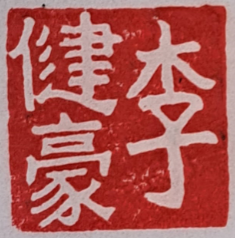Category: Chinatown
-
Polyglot Eating #12: coda
Long before I had an image of New York City, or even of the rest of the US, I had a strong, vivid impression of its Chinatowns. My grandparents were not walkers. My parents were not walkers. They were migrants, sometimes sojourners, and it was during the year that my parents shared in South Bend,…
-
Polyglot Eating #11: Displacement
How are Chinatowns formed? Sunset Park’s Chinatown is not so much a palimpsest, but marked with a porosity. The architecture of New York City can be surprisingly enduring, and the Municipal Archives’ tax photos help document their shifting occupancy and cultural lives. A NYT article exploring the past life of Eighth Avenue opens with the…
-
Polyglot Eating #10: Sunset Park
By the time the R train spits me out on 53rd Street, it is way past sunset, and I make my way to the main avenue, long shadows falling across residential buildings and the growing presence of signs (largely in simplified Chinese).. Weeks later, I stumble across a post from a city archivist that made…
-
Polyglot Eating #9: Detour, Singapore
The first time I really sit down to think about Chinatown, it is the year 2020. A major university press’s new series of ‘decolonial tour guides’ has commissioned an issue on Singapore, and what better to write about a place when the borders of my universe now rest strictly within a city-state less wide than…
-
Polyglot Eating #8: Carceral Heritage; or “I am very sorry for going there but I need to use MOCA”
Keefe’s description of East Broadway in The Snakehead is meant to add some journalistic flavour to an account of what is really a transnational network of human smuggling, rather than the city per se. Published in 2009, his book disentangles the ‘snakehead’ networks who brought thousands from Fuzhou to America. All books need their antagonists…
-
Polyglot Eating #7: Speaking in Tongues
I first learnt about New York’s Fuzhounese community upstate. On a road trip to view the autumn foliage of Lake George, my Indonesian friends were curious about American Chinese food (American serving as that pejorative adjective, I suppose), and a quick search online reveals a handful of takeout restaurants in Albany. None of them look…
-
Polyglot Eating #6: Reinvention
There is a restaurant that does what I erroneously pigeonholed Nom Wah Tea Parlor to do: that is, a kind of trendy reinvention of Chinese food, blending together different cuisines. I know it’s a bit of a cheap shot to tear apart the wide-eyed, gastronomically credulous food reviews for the thin basis of historicity they…
-
Polyglot Eating #5: Culinary Graveyard
I wonder what the graveyard of restaurants look like. Doing business anywhere is tough, and being greeted with shuttered storefronts, For Sale signs and [Permanently Closed] apologies on Google Maps feel like an acute reminder of how fleeting the culinary dimension can be. As someone who grew up in Singapore and Hong Kong, and spending…
-
Polyglot Eating #4: Frozen Dim Sum
Frozen Dim Sum View of Doyers Street, 1909. (Library of Congress) Fire on Doyers Street, date unknown (NY Fire Department) View of Doyers Street (Author’s Photo). Two friends from London are visiting. In my three years of undergraduate studies an hour away, I never did feel the urge to visit there; it seemed ridiculous to…
-
Polyglot Eating #3: Chinatown is Nowhere
3: Chinatown is Nowhere A ‘Chinatown’ is a funny thing. They are distinct neighbourhood when a city is appended to it, such that ‘London Chinatown’ or ‘Chinatown, Singapore’ or ‘Manhattan Chinatown’ of course refers to a specific place, often down to precise delineations unlike the blurred boundaries of, say, Harlem/Manhattan Valley/Morningside Heights/Upper West Side. Yet…
